Three Unique Features of PadKaKa Talking Books: Different from Traditional Picture Talking Books

PadKaKa Audio Books Are Not Traditional English Picture Books
Many parents mistakenly think PadKaKa’s audio books are just “English picture books.” However, PadKaKa is not a traditional picture book, and its usage is completely different.
PadKaKa audio books are designed to be used in combination with PadKaKa’s 645 animated vocabulary cards. Their main purpose is to enhance learning effectiveness by 2–3 times.
📚 PadKaKa Audio Book Series Overview
- Let’s Talk & Read: A set of 12 books, each aligned with 600 animated vocabulary cards
- Let’s Sing: A single book aligned with 45 English song animations
📖 Detailed Features of Let’s Talk & Read (12 books)
- Each book corresponds to 50 vocabulary animation cards, arranged in card order
- Each page matches one vocabulary animation, totaling 600 pages
Inside the Let’s Talk & Read series, you’ll find:
- Cartoon Dialogues — over 4,200 sentences taken directly from the animations
- Representative Cartoon Images — helping children recall animation scenes
- Parent-Child English Sentences — four simple sentences for each vocabulary word, totaling 2,400 phrases
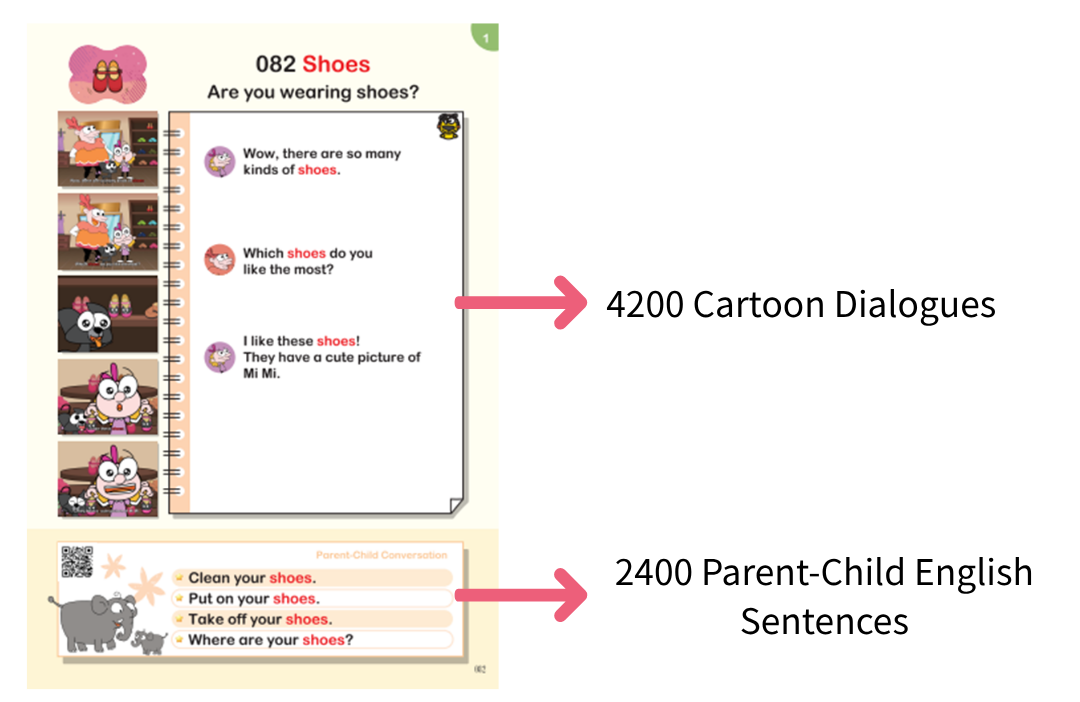
Let’s Talk & Read – Key Audio Features
- Complete audio tracks for each cartoon (including background sound effects and dialogue)
- All character lines from each cartoon, read continuously in sequence
- Every individual line spoken by each character
- Parent-child English sentences
- Vocabulary pronunciation
Let’s Talk & Read – More Than Just Dialogues
This series isn’t only for understanding cartoon dialogue — it offers three essential and unique functions that define the PadKaKa learning system:
- Parent-Child English Interaction
- Role Playing
- Natural Reading
Each of these features is vital and offers unique language-learning benefits. Here’s a quick breakdown:
🔸 A. Parent-Child English with Cartoons
When watching PadKaKa cartoons, parents can use simple English phrases to reinforce learning.
For instance, if a child recently watched Card #082: Shoes, Book 2 of the Let’s Talk & Read series provides four simple sentences related to “Shoes” for daily use:
- Where are your shoes?
- Put on your shoes.
- Take off your shoes.
- Clean your shoes.
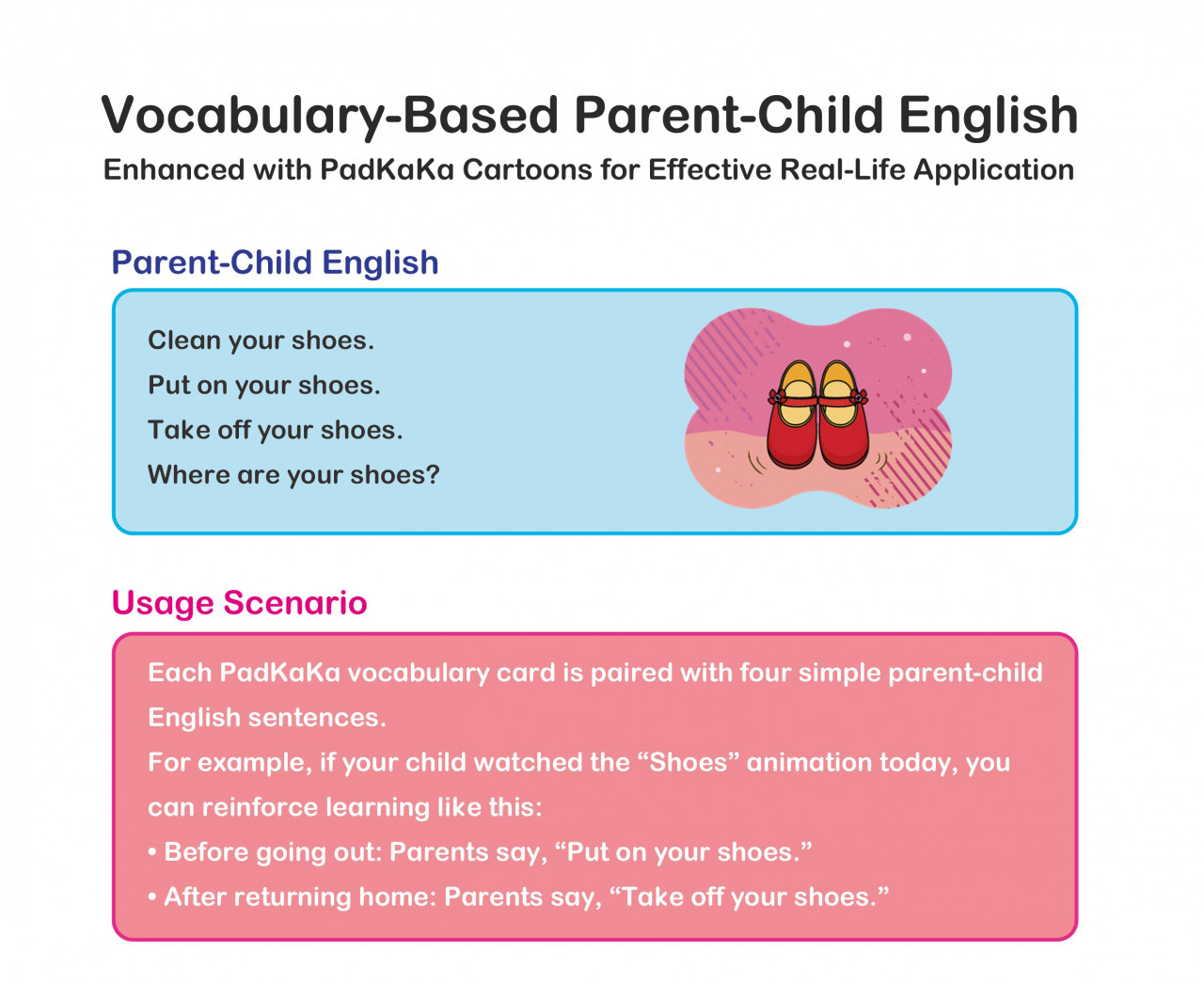
Over a few days, parents can choose 2–4 simple English sentences and look for chances to use them in real-life situations with their child. By repeating these phrases, both the child and the parent naturally learn them.
For example, when you’re about to leave the house, say:
“Where are your shoes? Where are your shoes?”
Help your child look for their shoes. Once found, say:
“Put on your shoes,” and help them put them on.
When you return home, say:
“Take off your shoes.”
This way, children not only learn through cartoons, but also feel the language in their daily routines. Connecting language to real-life experiences boosts learning effectiveness by 2–3 times. Children will even feel that English is part of their parents’ language, which increases engagement and comfort.
That’s why Let’s Talk & Read should be used from the very beginning—it’s meant to be paired with the vocabulary cards and cartoons right away.
Reminder: Parent-Child English is designed for parents to use, not for children to study as textbook sentences.
If you’re unsure about pronunciation, you can tap and listen first using the audio feature.
Just like when children first learn Chinese, hearing natural language in context from their parents is incredibly powerful and effective.
- Role Playing with Favorite Cartoons
After watching English cartoons for around 6 to 12 months, children are ready for role playing—pretending to be characters and mimicking their speech.
This kind of imaginative play has long been one of the best ways to help kids start speaking out loud in English. Parents are encouraged to join in too!
Many parents have told us how much their kids enjoy imitating cartoon characters. Through observation and feedback, we found that PadKaKa cartoons are ideal for role play because the stories are short, the sentences are simple, and the content is fun.
Responding to parents’ suggestions, we even created character tokens that children love using during their role play. When kids engage in this kind of imaginative replaying, their language skills—especially speaking—can grow incredibly fast.
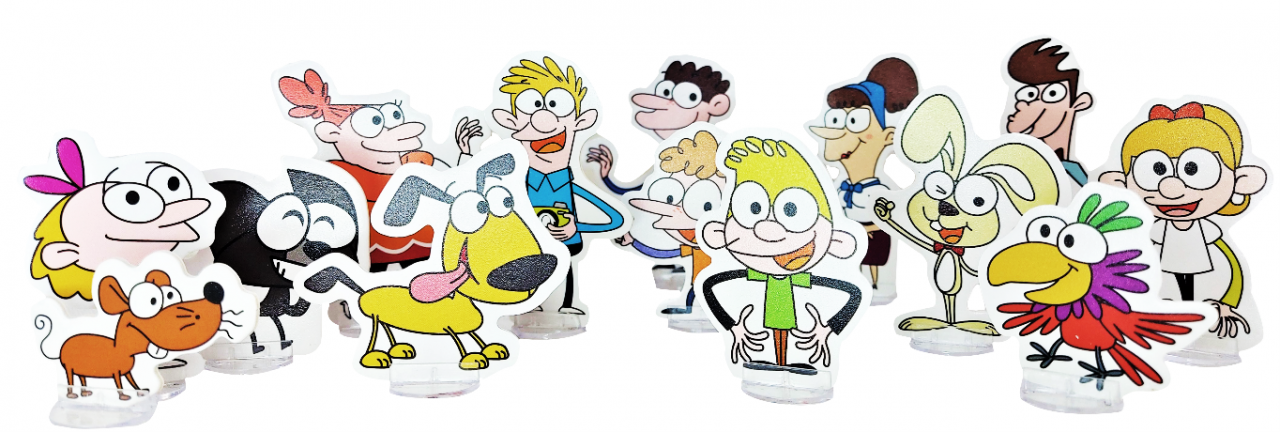
Three Stages of Role Playing
Children can begin with the simplest form and gradually advance:
- Beginner Level: The child mimics cartoon characters while watching the animation—repeating lines aloud.
- Intermediate Level: Without watching the cartoon, the child uses audio books or audio pens to rehearse character dialogue.
- Advanced Level: The child performs the cartoon dialogue independently after mastering it.
Let’s take a look at sample videos for beginner, intermediate, and advanced stages:
Benefits of Role Playing
- Rapid development of speaking ability
Oral expression begins by imitating sounds—not reading aloud from textbooks.
Role playing may not yet be “true speaking” (expressing thoughts freely), but it’s far more effective than mere memorization. It helps children create mental imagery and stimulates thinking in English.
Using character tokens enhances this immersive experience, making role play a powerful “pre-speaking” stage.
Pretend play has long been one of the best ways for children to start speaking aloud—something seen worldwide. - Encouraging reluctant speakers
Many children hesitate to speak English, but when role playing, they feel like they’re speaking for the cartoon character—making them more willing to talk.
⚠️ Tips for Effective Role Playing
- No need to act out every cartoon—start with the child’s favorites. Fun and confidence-building are key.
- Be expressive and exaggerated! Let the child feel it’s just playtime.
For example, take the sentence from the “Cat” card: “Cat is amazing.”
Instead of saying it plainly, express it with feeling and volume:
👉 “Cat is amazing!”
This is important—it helps children feel that English is a warm, living language, not just one for tests and homework.
It builds closeness and confidence. In fact, drama and performance are a big part of early childhood education in Western countries, boosting both verbal and non-verbal expression. - In the beginning, children may struggle to complete entire dialogues—so parental involvement is highly encouraged!
Being part of the play lowers difficulty and makes it more fun.
Parents should also speak with emotion and confidence—say the lines out loud with enthusiasm.
📚 C. Transitioning to Natural Reading After Cartoon Familiarity
Once children have developed basic listening and speaking skills, they can begin “natural reading” with their favorite cartoons—especially ones they already understand.
With the help of PadKaKa’s audio books and pens, this transition becomes smooth.
✨ Why PadKaKa’s Natural Reading Works So Well:
- Through watching animated vocabulary cards and cartoons, children have already naturally learned many words—from both the cards and repeated exposure in the app.
- PadKaKa is designed so that children first become familiar with the dialogue and context, and then begin reading.
A crucial point: children should understand at least 80–90% of a book’s content. That’s when natural word recognition and reading flow easily.
Otherwise, frustration can set in. - Compared to most English picture books, PadKaKa’s vocabulary and sentences are simpler and based on real-life expressions, making them ideal for beginners.
🔑 Reminder: Don’t rush into reading!
Make sure to build a solid foundation in listening and speaking first, using vocabulary cartoons, Parent-Child English, and Role Playing. Once those are in place, natural reading will blossom.
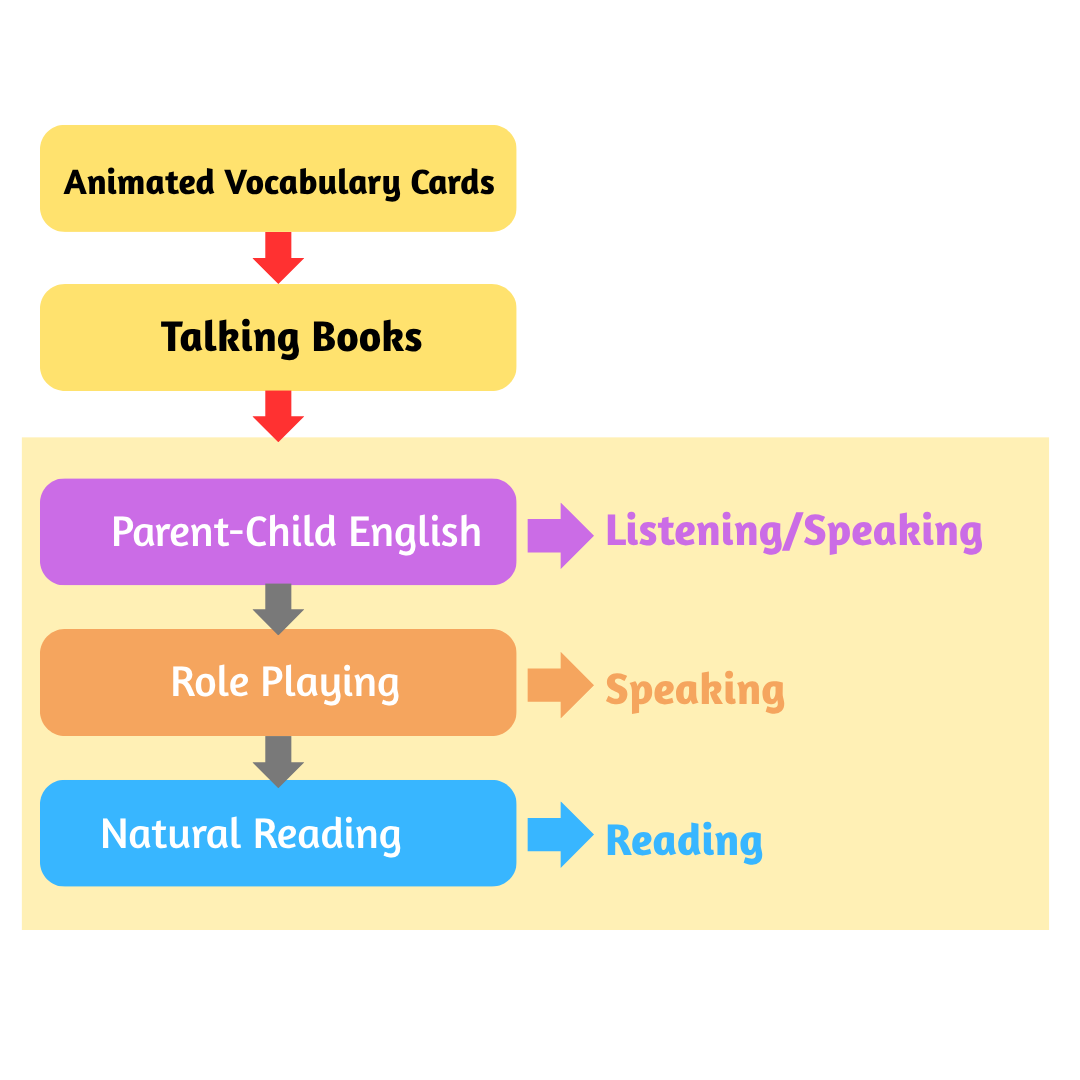
Let’s Sing & Read – One Book
Designed to accompany 45 animated English song cards.
This book features lyrics and interactive audio tracks that children can tap and listen to—just like a karaoke experience!
There are four audio modes available:
- Sing-Along Mode – Full song playback with lyrics and music
- Karaoke Mode – Instrumental track only
- Vocal Mode – Lyrics only, with no background music
- Echo Mode – Designed for children to sing along and imitate the lyrics
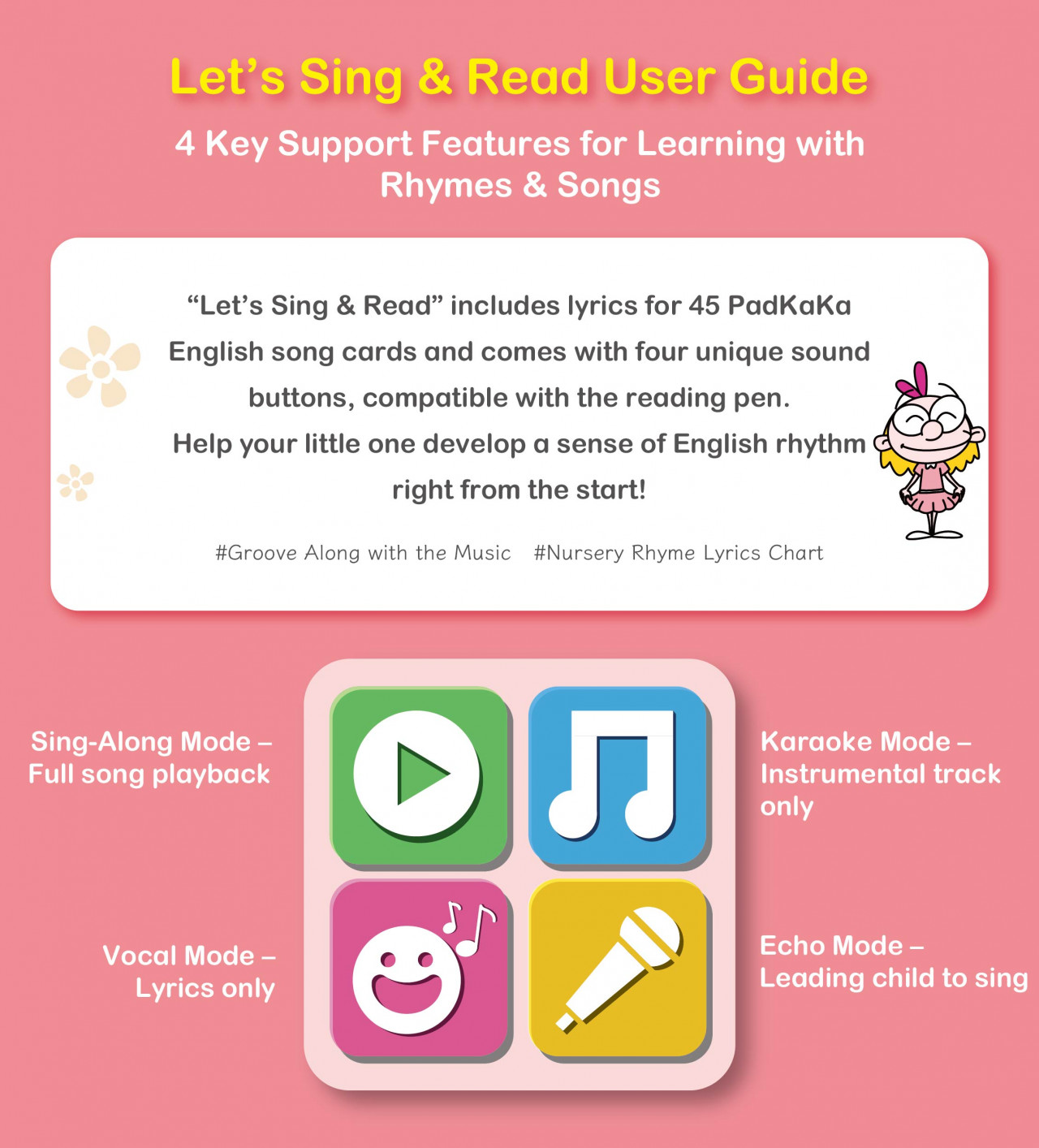
Contact Us: service@padkaka.com





